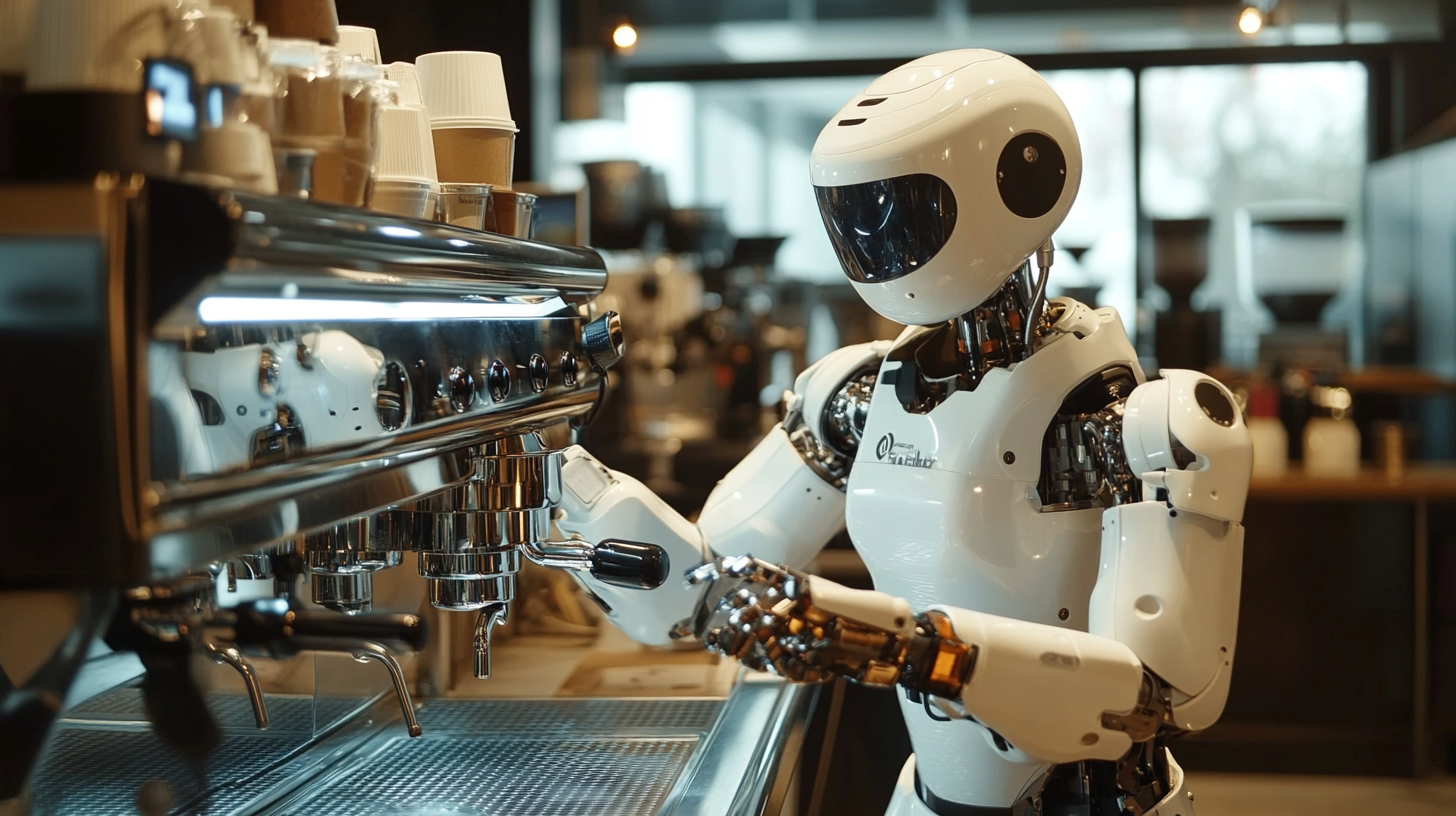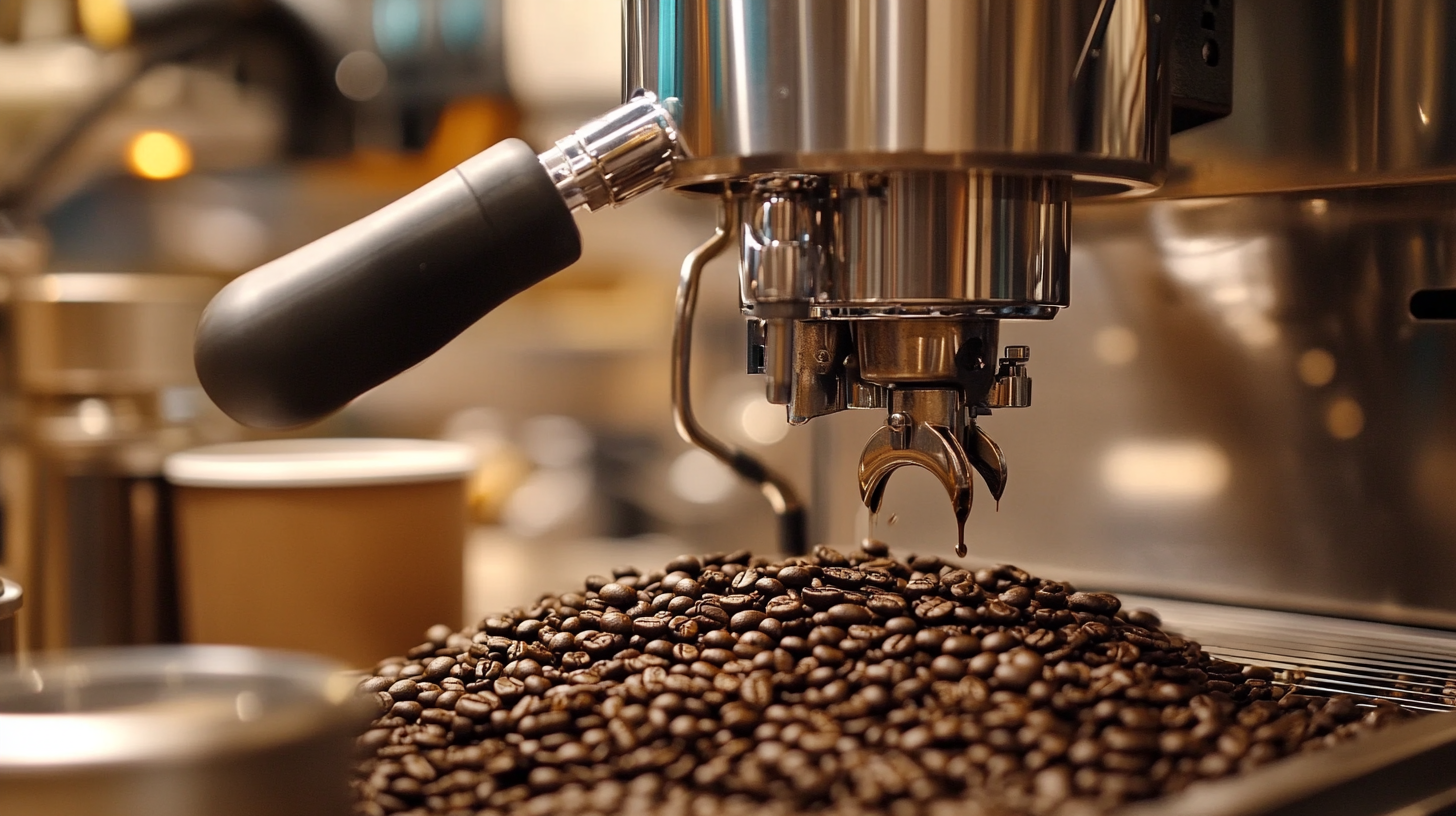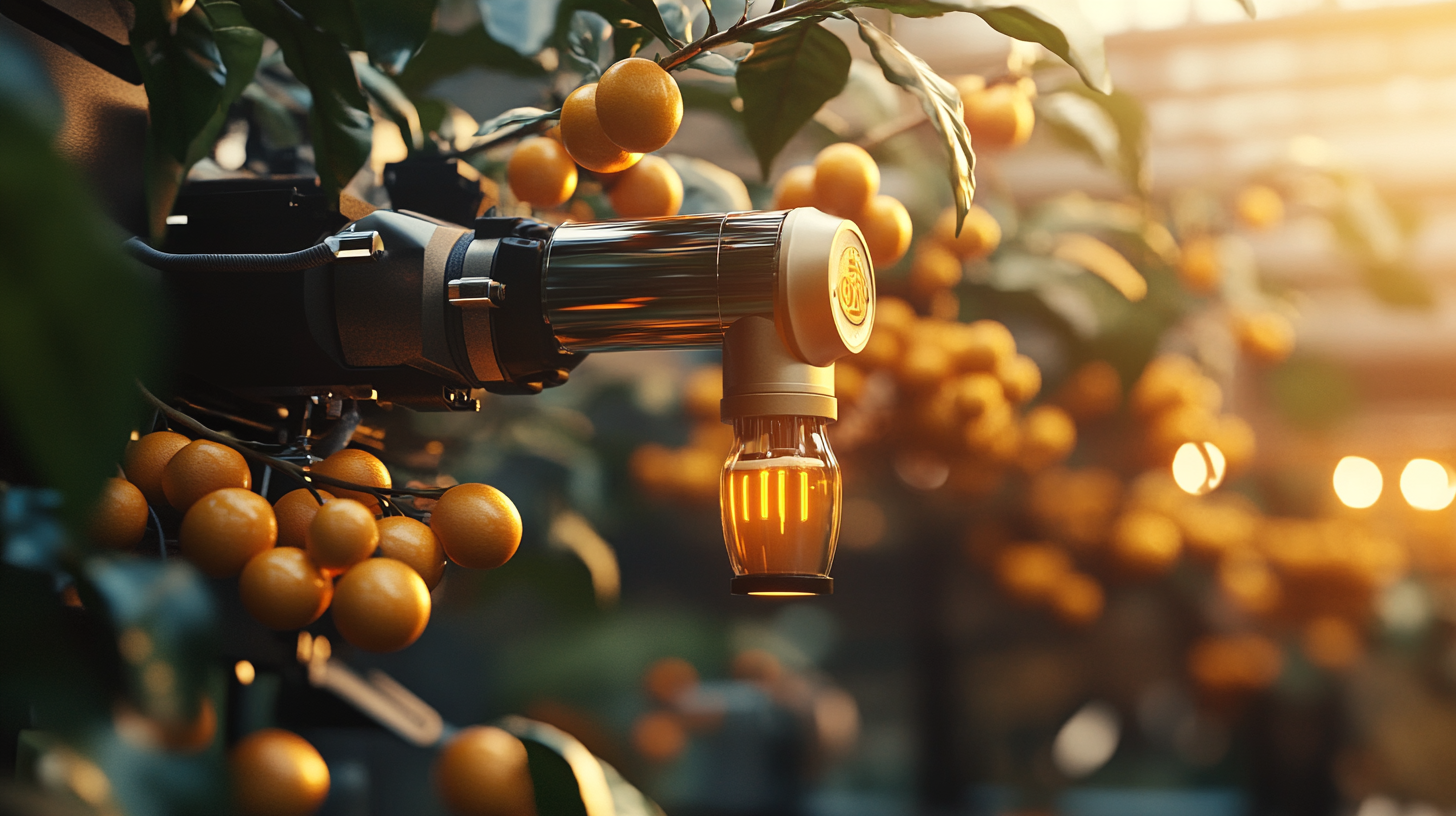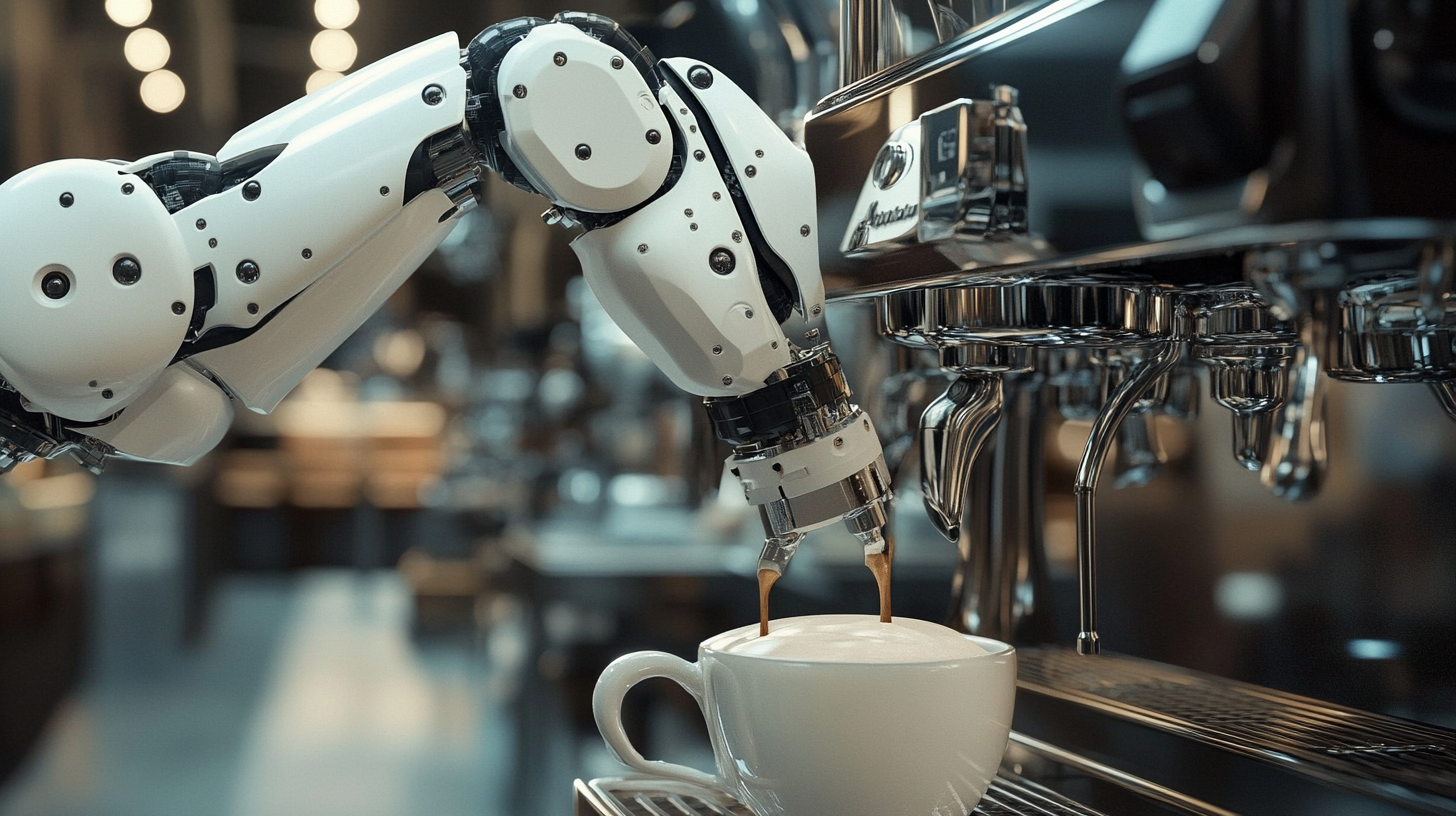Revolutionizing the Coffee Industry: How Coffee Robots Increase Efficiency by 30% in Global Production
In recent years, the coffee industry has experienced a transformative wave driven by technology, particularly with the introduction of Coffee Robots. According to a report by the International Coffee Organization, coffee production is expected to reach 178 million 60-kilogram bags by 2023. However, this growth comes with challenges such as labor shortages and the need for sustainable practices. Coffee Robots, which are designed to automate various processes in coffee farming and processing, have proven to increase efficiency by up to 30%. This not only helps meet the rising demand but also addresses the pressing issues of labor costs and environmental sustainability.
As Coffee Robots continue to gain traction, the implications for the global coffee supply chain are profound. A study by the Food and Agriculture Organization indicates that the integration of robotic automation can significantly reduce the manual labor required in coffee harvesting, allowing farmers to optimize their operations. By streamlining workflows and enhancing productivity, these innovative machines are not merely improving efficiency but revolutionizing the way coffee is produced. This blog will explore the impact of Coffee Robots on efficiency in the global coffee production landscape and what this means for consumers and producers alike.

The Rise of Coffee Robots: Transforming Global Production Landscapes
The rise of coffee robots marks a significant evolution in the global coffee production landscape, driven by the pressing need for efficiency and quality enhancement in an industry facing increasing demands. As technological advancements take center stage, particularly in countries with robust agricultural sectors like Brazil, coffee producers are embracing automation and artificial intelligence. By integrating these technologies, growers can not only streamline their operations but also elevate the quality of their coffee, ensuring they remain competitive in a rapidly changing market. China’s ambitious plan to deploy one million AI robots within two years reflects a broader trend in automation that is reshaping various industries, including coffee. This initiative underscores the shift towards Industry 4.0—where cutting-edge technologies converge to redefine efficiency and production standards. In this context, coffee robots act as a crucial element, enabling producers to elevate their processes through precise farming techniques and reduced labor costs. The adoption of such innovative production systems is not merely an enhancement of traditional methods; it represents a transformative leap towards a more sustainable and productive coffee industry. The implementation of coffee robots further aligns with the ongoing evolution of artificial intelligence and robotics across the agricultural sector. As these technologies become more ingrained in everyday practices, coffee producers can expect to witness a notable increase in overall productivity. As the industry continues to adapt to these advancements, the future of coffee production looks increasingly promising, marked by enhanced efficiency and a commitment to quality that mirrors the demands of both consumers and the global market.

Efficiency Metrics: Analyzing the 30% Increase in Coffee Production
The coffee industry is rapidly evolving, and one of the most significant advancements is the integration of robotics into production processes. Recent studies indicate that the adoption of coffee robots can lead to a remarkable 30% increase in efficiency across global production. According to a report by the International Coffee Organization, traditional coffee harvesting methods are labor-intensive and time-consuming, often resulting in fluctuations in quality and yield. By automating these processes, coffee robots significantly reduce labor costs and enhance the consistency of coffee beans harvested.
In a detailed analysis of productivity improvement in agricultural practices, the Food and Agriculture Organization (FAO) noted that implementing robotic technology allows for precise control over harvesting schedules and conditions, ultimately leading to higher quality beans. With the global coffee consumption expected to grow at a compound annual growth rate of 5% through 2025, increasing production efficiency has never been more crucial. The 30% increase in output not only meets rising consumer demand but also supports sustainability initiatives by minimizing waste and maximizing resource utilization.
Moreover, as coffee production faces challenges such as climate change and workforce shortages, robotics offers a viable solution. A recent report by Markets and Markets projects the global agricultural robotics market to reach $20 billion by 2025, driven by advancements in AI and machine learning. This shift not only enhances operational efficiency but also positions the coffee industry to adapt to future challenges while maintaining quality and flavor in every cup.

Automation in Agriculture: The Role of Robotics in Coffee Farming
Automation has become a vital player in modern agriculture, and the coffee industry is no exception. Robots are increasingly being integrated into coffee farming, transforming traditional practices and significantly enhancing productivity. By leveraging advanced technology, coffee robots are designed to streamline various processes, from planting and harvesting to processing the beans. This mechanization not only reduces the physical labor required but also helps in maintaining consistent quality throughout the production cycle.
The adoption of robotics in coffee farming has shown a remarkable increase in efficiency, with reports indicating an improvement of up to 30% in global production. This efficiency is attributed to the precision and speed of robotic systems, which can operate in various weather conditions and enhance the speed of harvesting. Unlike human laborers, robots can work tirelessly, allowing farmers to meet the growing demand for coffee without compromising on quality. Moreover, the data gathered by these robots can provide farmers with insights for better crop management, enabling them to make informed decisions that further boost yield.
As the coffee market continues to evolve, the role of automation in agriculture will likely expand. Robotics can address labor shortages, ensure sustainability, and ultimately improve the livelihoods of coffee farmers. By embracing these technological advancements, the coffee industry stands at the forefront of a revolution that aligns productivity with innovative solutions, securing its future in an increasingly competitive environment.

Cost-Benefit Analysis: Investing in Coffee Robotics for Sustainable Growth
The coffee industry is on the brink of a technological renaissance, with robotics playing a pivotal role in enhancing production efficiency. With recent developments showcasing a 30% increase in productivity through the implementation of coffee robots, the question arises: what does this mean for the sustainability and profitability of coffee production? The integration of AI and robotics not only streamlines labor-intensive processes but also addresses the chronic labor shortages faced by the industry, allowing for a more resilient supply chain.
Conducting a cost-benefit analysis of investing in coffee robotics reveals a compelling case for sustainable growth. The initial outlay for robotic systems may seem significant, but the long-term savings in labor costs, increased yield, and reduced waste offer a favorable return on investment. As robots take over repetitive tasks, human workers can shift their focus to more strategic roles, leveraging their skills to improve overall business practices. This synergy between humans and machines may well define the future of coffee production, where enhanced efficiencies complement the expertise of coffee artisans.
Furthermore, as the world becomes increasingly aware of environmental impacts, employing coffee robotics aligns with eco-friendly practices. Automation can help optimize resource use, minimize waste, and enhance the traceability of coffee sourcing. In a market that increasingly favors sustainability, investing in robotics not only ensures competitiveness but also resonates with the values of conscious consumers, setting the stage for a more responsible and profitable coffee industry moving forward.
Future Trends: The Next Wave of Innovation in the Coffee Industry
As the coffee industry grapples with rising labor costs and the increasing demand for high-quality products, innovation has become key to remaining competitive. The introduction of coffee robots is not merely an enhancement of existing processes, but a transformative shift that could redefine the future of coffee production. According to a report by the International Coffee Organization, global coffee production has surged by approximately 1.2 million tons over the past five years, placing immense pressure on producers to increase efficiency and manage resources effectively.
The deployment of robotic technology in harvesting and processing coffee has shown a remarkable ability to enhance efficiency by up to 30%. With automated systems capable of seamlessly integrating data analytics and machine learning, farmers can optimize their yield while minimizing waste. A recent study highlighted that farms employing robotic technologies saw a reduction in labor costs by about 20% and an increase in processing speed, allowing them to respond quickly to market fluctuations.
Looking ahead, the next wave of innovation in the coffee sector is likely to focus on sustainability and traceability. Technologies such as blockchain will provide consumers with insights into the origin and journey of their coffee beans, ensuring transparency in production. Furthermore, advancements in agritech will allow for precision farming techniques that enhance crop resilience to climate change, enabling farmers to produce high-quality coffee in a more sustainable manner. According to the Specialty Coffee Association, such innovations will be crucial for maintaining the delicate balance between quality and sustainability that modern coffee consumers demand.

